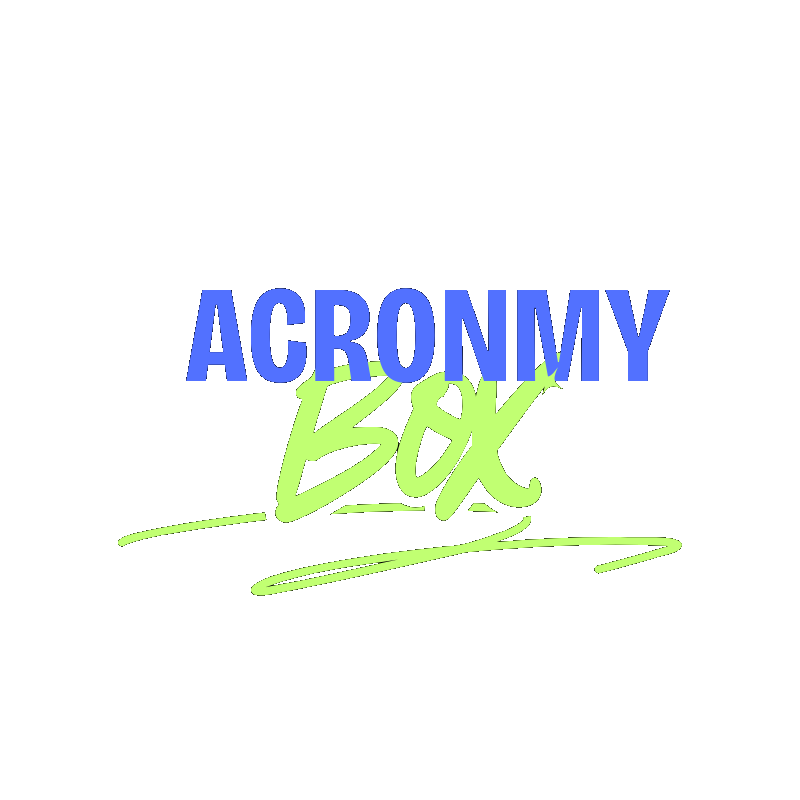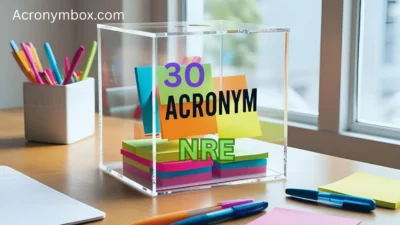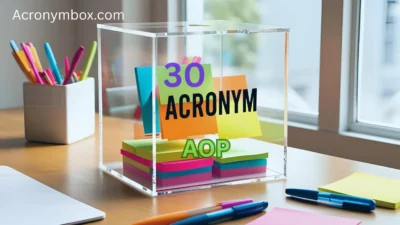The word “RACE” is commonly used as an acronym in various contexts—from education to public relations to social justice.
But depending on the setting, “RACE” can symbolize very different ideas, so it’s important to explore its multiple meanings and potential alternatives.
In this article, we’ll unpack the key meanings and nuances of the “RACE acronym,” and then introduce you to 30 alternative acronyms and phrases that you can use depending on your tone, message, or context.
Whether you’re writing a persuasive essay, creating a business plan, or communicating a social message, there’s a fitting alternative here for you.
Understanding the “RACE” Acronym
“RACE” is often used as a teaching or communication framework. Some of the most common interpretations include:
- In PR/Marketing:
Research, Action, Communication, Evaluation - In Writing (especially in education):
Restate, Answer, Cite, Explain - In Diversity/Inclusion contexts:
RACE may be used symbolically to reference racial identity or social justice initiatives.
Because the acronym is so adaptable, it’s helpful to have alternative acronyms or frameworks that serve different purposes more precisely.
30 Alternatives to the RACE Acronym and When to Use Them
1. PEEL
Meaning: Point, Evidence, Explain, Link
Example: “Use the PEEL method to structure your paragraphs.”
Best Use: Academic writing, essays.
2. SOAR
Meaning: Situation, Objective, Action, Result
Example: “She used the SOAR method to answer the interview question.”
Best Use: Interviews, resumes, storytelling.
3. DARE
Meaning: Decide, Act, Reflect, Evaluate
Example: “The DARE method helps with ethical decision-making.”
Best Use: Leadership, coaching, ethics.
4. STAR
Meaning: Situation, Task, Action, Result
Example: “Use STAR to structure your success stories in interviews.”
Best Use: HR, professional development.
5. TAPE
Meaning: Topic, Answer, Proof, Explanation
Example: “Use TAPE for strong short responses in exams.”
Best Use: Education, writing responses.
6. CRAAP
Meaning: Currency, Relevance, Authority, Accuracy, Purpose
Example: “Use CRAAP to evaluate online sources.”
Best Use: Research, digital literacy.
7. RIDA
Meaning: Recognize, Identify, Decide, Act
Example: “RIDA is useful for safety or emergency training.”
Best Use: Risk management, safety protocols.
8. PREP
Meaning: Point, Reason, Example, Point
Example: “In debates, use PREP for clear argument delivery.”
Best Use: Debates, public speaking.
9. CARS
Meaning: Credibility, Accuracy, Reasonableness, Support
Example: “Use CARS when analyzing news sources.”
Best Use: Critical thinking, media analysis.
10. RARE
Meaning: Restate, Answer, Reason, Explain
Example: “RARE is a solid method for evidence-based answers.”
Best Use: Classroom responses, essay writing.
11. FIRE
Meaning: Focus, Illustrate, Reflect, Evaluate
Example: “Her FIRE-based reflection was powerful.”
Best Use: Reflective writing, learning journals.
12. ACE
Meaning: Answer, Cite, Explain
Example: “Use ACE to tackle text-based questions.”
Best Use: Standardized tests, essays.
13. SOAP
Meaning: Subjective, Objective, Assessment, Plan
Example: “SOAP notes are standard in medical records.”
Best Use: Healthcare, clinical documentation.
14. RISE
Meaning: Reflect, Identify, Strategize, Execute
Example: “RISE helps in goal setting.”
Best Use: Coaching, self-improvement.
15. TRACE
Meaning: Topic, Role, Audience, Context, Exigence
Example: “TRACE is a great rhetorical analysis tool.”
Best Use: College-level writing, rhetorical analysis.
16. SAFE
Meaning: Scan, Assess, Fix, Evaluate
Example: “Use SAFE during security checks.”
Best Use: Cybersecurity, maintenance protocols.
17. REAL
Meaning: Reflect, Explore, Analyze, Learn
Example: “REAL helps deepen experiential learning.”
Best Use: Education, reflective practice.
18. LEAD
Meaning: Listen, Empathize, Act, Develop
Example: “Use LEAD to guide inclusive leadership.”
Best Use: Leadership training, team building.
19. PLAN
Meaning: Prepare, List, Act, Note
Example: “She used PLAN for time management.”
Best Use: Task planning, productivity.
20. CLEAR
Meaning: Clarify, Learn, Explain, Apply, Reflect
Example: “CLEAR improves comprehension skills.”
Best Use: Teaching, training.
21. LIFT
Meaning: Learn, Implement, Fine-tune, Test
Example: “LIFT is ideal for product design cycles.”
Best Use: UX/UI, product development.
22. BOLT
Meaning: Brainstorm, Organize, Link, Test
Example: “Use BOLT in the creative writing process.”
Best Use: Creative or team-based writing.
23. GRIT
Meaning: Gather, Reflect, Integrate, Takeaway
Example: “GRIT helped build personal resilience.”
Best Use: Self-growth, motivational contexts.
24. MOVE
Meaning: Motivate, Organize, Visualize, Execute
Example: “MOVE is a strong method for project planning.”
Best Use: Goal setting, project management.
25. WISE
Meaning: Watch, Interpret, Suggest, Evaluate
Example: “WISE fits well in conflict resolution training.”
Best Use: Counseling, social situations.
26. PERSUADE
Meaning: Point, Evidence, Reasoning, Style, Understand, Argue, Deliver, Evaluate
Example: “PERSUADE helps structure persuasive essays.”
Best Use: Rhetoric, persuasive writing.
27. BUILD
Meaning: Brainstorm, Understand, Iterate, Learn, Deliver
Example: “BUILD is common in design thinking.”
Best Use: Innovation, startup culture.
28. FOCUS
Meaning: Find, Organize, Clarify, Use, Summarize
Example: “FOCUS supports effective research projects.”
Best Use: Academic research, reporting.
29. PACE
Meaning: Plan, Act, Check, Evolve
Example: “PACE your progress to avoid burnout.”
Best Use: Agile development, wellness.
30. SAGE
Meaning: State, Argue, Give examples, Explain
Example: “Use SAGE for analytical writing tasks.”
Best Use: Critical essays, debates.
How to Choose the Right Acronym
Just like with “RACE,” picking the right acronym depends on audience, purpose, and tone:
- Academic writing? Use PEEL, ACE, or RARE.
- Job interviews? Go with STAR or SOAR.
- Public speaking or debate? PREP, PERSUADE, or SAGE shine.
- Creative work? Try BOLT, BUILD, or FOCUS.
- Reflective or personal development? Use REAL, RISE, or GRIT.
Cultural and Emotional Contexts
Some acronyms like LEAD or GRIT evoke a more motivational tone, while others like SOAP are industry-specific. Choose based on clarity, audience expectations, and emotional impact.
Conclusion
The RACE acronym is useful, but it’s just one tool in a much larger box. Whether you’re teaching, presenting, reflecting, or writing, having a range of acronym-based frameworks can help you organize ideas, engage your audience, and communicate effectively.
When in doubt, think about what you want your reader or listener to understand, feel, or do—and let that guide your choice.




